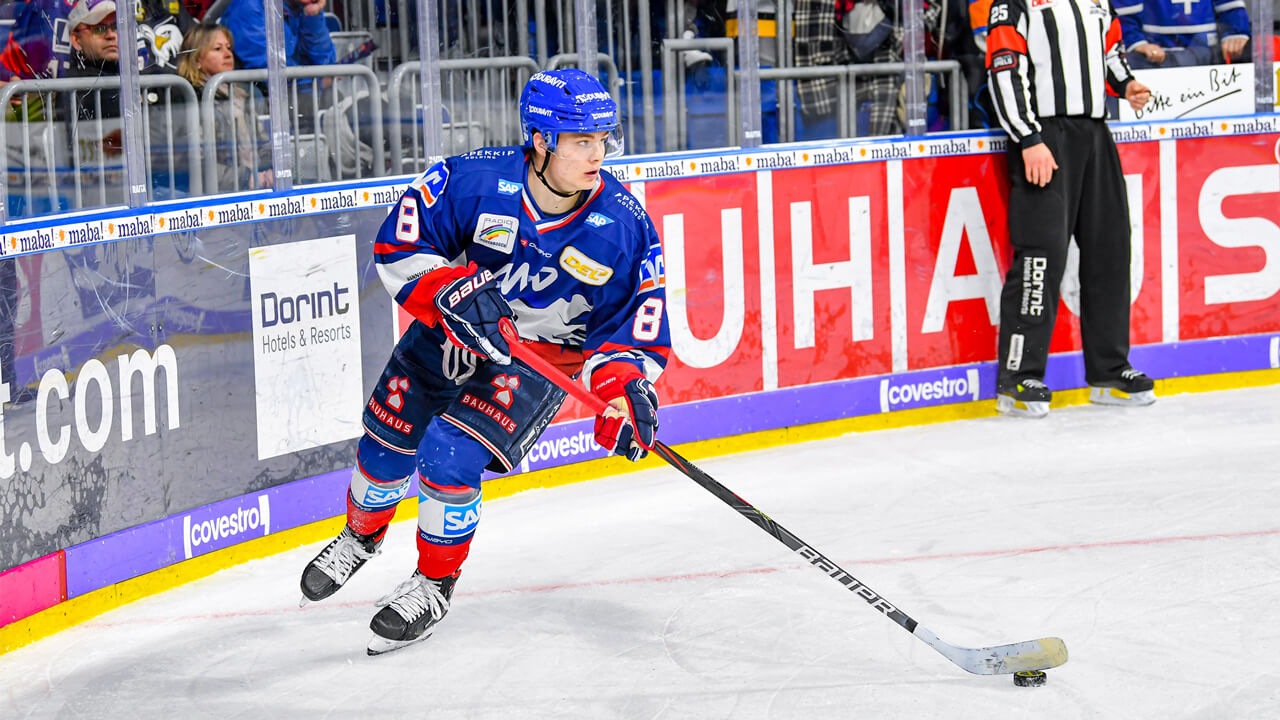Tom Webster was, if not a shy man, then at least an unassuming one, almost painfully self-effacing around those who didn’t know him well. That’s rare in the hockey business that is, like the game, built on confidence and the bluster of people too eager to exaggerate their influence. So it shouldn’t have been a surprise that his death in April wasn’t big news in the media, that #Webbie and #RIPHawkeye never trended. Across the NHL, players, coaches, scouts and executives mourned his passing in a way that escaped notice, at least in part because the COVID-19 lockdown deprived them of the opportunity to attend his funeral.
A lot of famous names would have made it out to pay respects and celebrate his half-century in the game. Many Tom Webster stories would have been shared. I have a few of my own but I’m going to go with just one here.
Back in February 2008, I headed down to Windsor with a very sad assignment: to cover the Spitfires’ first game after the sudden death of their captain, Mickey Renaud, at the age of 19. An outgoing, charismatic kid, a genuine live wire, Renaud had grown up in Windsor and seemed to know everyone in town. He drew his last breath when he was sitting down to breakfast with a couple of younger teammates. An autopsy would reveal an undiagnosed heart condition. A few games were cancelled in the wake of Renaud’s death. When the team again took the ice, against Belleville on a Thursday night, there was a ceremony before the game that no one in attendance would forget.
The morning of that gameday, I arrived at the Windsor Arena about the same time as the coaches and players. The general manager at the time, Warren Rychel, and the coach, Bob Boughner, had brought in grief counsellors and met with every player one-on-one. It would have been a tough situation for any organization but the Spitfires were the youngest team in the league. It would have been a tough situation for any GM and coach but Rychel and Boughner were still new to the management of a major-junior franchise — both in their second season with the Spitfires. “One of the things that really helped us that year was the fact that we could always go to Webbie for advice,” Boughner says. “We’d have coffee with him once every week or so and pick his brain. And he’d never say, ‘You have to do this.’ He’d just talk us through whatever the situation was.”
The door to the home team’s dressing room was open as I approached and from the hall I saw Renaud’s sweater hanging at his stall and a pair of heavy work boots placed in front of it. I also saw Tom Webster sitting down in conversation with a couple of teenagers at their stalls. A scout with the Calgary Flames, Webster didn’t have any official role with the Spitfires, but he had history — he’d coached the team for eight seasons over three stints, and as recently as 2002. He’d also known Renaud going back to peewee, probably even before, and had convinced the Flames to select him in the fifth round of the 2007 draft. He was grieving no less than anyone in the room.
Webster spoke barely above a whisper and I couldn’t make out what he said. Nonetheless, he commanded the full attention of his small, teary audience. Despite his nickname, he seemed more grey-haired owl than hawk behind his wire-rimmed glasses. If you didn’t know better you might have presumed that he was the team chaplain. I had to wait until he was done to to ask him what he could say in a situation like this. According to his friends and family, what he said to me is all that you’d ever need to know about him.
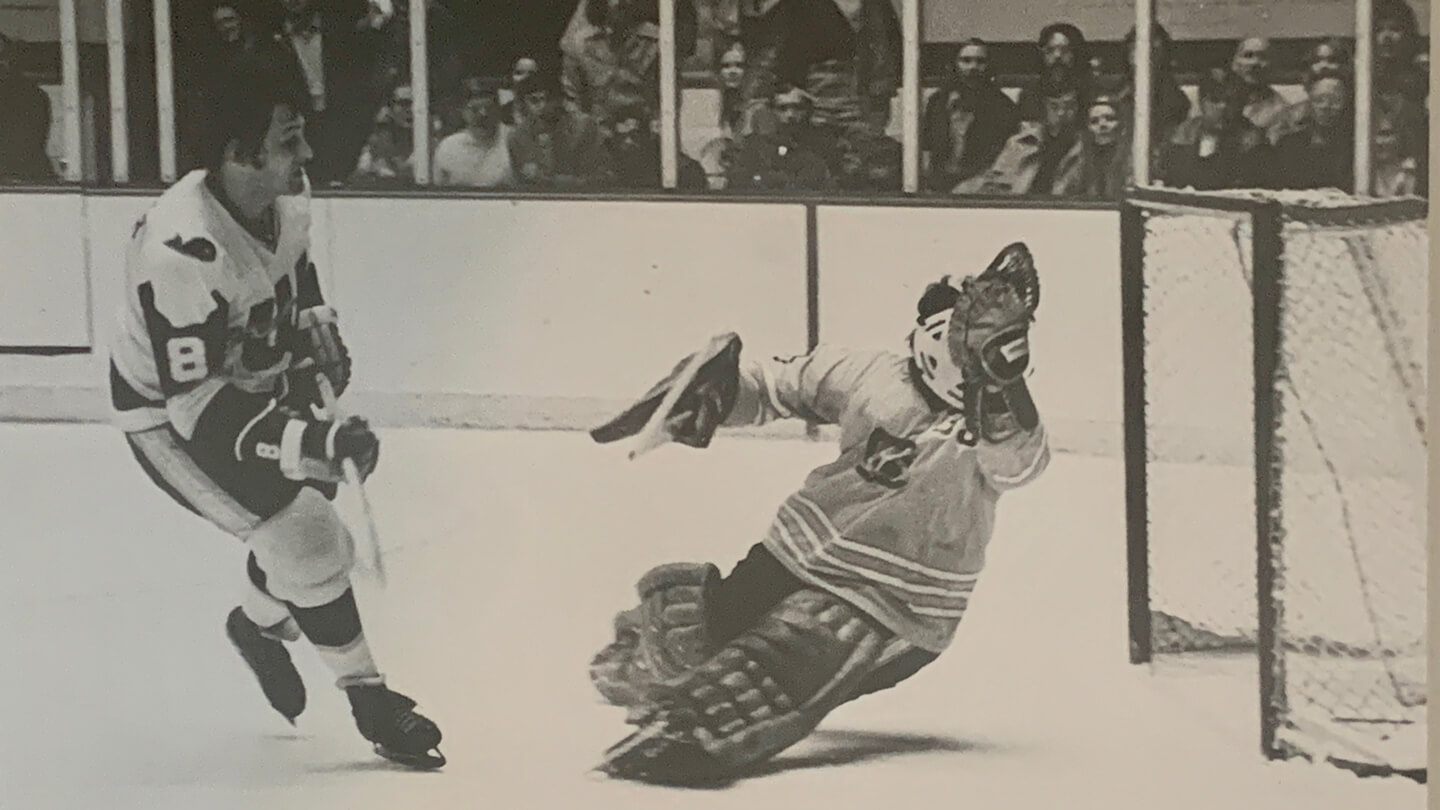
Before the Flames announced their first pick in the first NHL Draft to be conducted online, they had gathered in the war room and hung a banner celebrating Webster’s contributions to the organization. A small gesture perhaps, but one that evoked the last time the team honoured him. In 2014, Webster’s final draft with the Flames before he retired, he was passed the mic to announce their final pick. En masse, everyone at every table on the floor of the Wells Fargo Center in Philadelphia, his peers and countless proteges, stood up and gave him an ovation that was like none before or since. What the scouting staff intended as their tribute became a spontaneous industry moment.
It was the seventh round, so the stands had started to empty a couple of hours earlier, and it wasn’t clear that the thinned-out crowd knew what to make of a tribute to a name that was only faintly recognizable. Those with grey hair and league passes, though, knew Webster’s history and the impact he’d had on the game. They knew him beyond the biographical details. The majority of them knew him personally, and a good number even felt indebted to him. “He was a hockey lifer in the best sense of the word,” Calgary amateur scouting director Tod Button says.
The son of a postman, Webster was born in Kirkland Lake, a mining hub in Northeastern Ontario and mother lode of hockey talent. Back in the late ’40s, the population was 20,000 and legendary broadcaster Foster Hewitt called it “the town that made the NHL,” and back in Webster’s day many young locals did just that. Webster grew up just a couple of doors down from Mickey Redmond’s grandmother. “My family moved away from Kirkland Lake when I was five but we always came back to visit, and so Tom and I would end up playing on the street and in the alley between the houses,” says Redmond, who went on to be an NHL all-star. “All kinds of talent came out of that town — winters were long and cold so there was no problem getting ice time.”
Webster moved south to play junior hockey with the Niagara Falls Flyers at age 16. I go far enough back to remember him with that Flyers team, which won the 1968 Memorial Cup in what was his last junior season, beating the Estevan Bruins in the final, four games to one. Webster had a killer wrist shot, heavy and accurate, hence the nickname, “Hawkeye.” He scored goals by the bunch — he had 50 and a league-leading 114 points in 54 regular-season games — and he scored them when needed most, including the double-overtime winner in Game 4 of that ’68 final. A fan of the old OHA, I thought he’d be a superstar at the next level even though he was Boston’s fourth-round pick in 1966 (albeit in those days, with just six teams, that meant he went 19th overall).
Though he fell short of superstardom, Webster turned out to be a very good player. He couldn’t crack the lineup of the then-rising Bruins, who traded him to Detroit. In his first full season with the Red Wings, at the age of 22, he finished fourth in Calder Trophy voting and racked up 30 goals to lead the team in scoring, a team that included linemates Gordie Howe and Alex Delvecchio. “He was a natural scorer,” says Redmond, who was traded by Montreal to Detroit in mid-season. “He was a year younger than me and I already had three seasons in the league. It really looked like he’d be a key piece on a good team down the line.”
That seemed to bode well for bigger things, but circumstances conspired against Webster. The next season, Detroit traded him to the California Golden Seals, but injuries limited him to just 12 games. He then headed to the WHA, where he played his best professional hockey, mostly in the shadows. In the league’s inaugural season, Webster scored a team-leading 53 goals and 103 points for the New England Whalers, leading them to a championship. “Tom was our best player, a real finisher — just an unbelievable release he had — but what I remember most was he was just so much fun to be around,” says Skip Cunningham, who was New England’s equipment manager. “We busted him about the white skates that he had from the Seals — I’d have to blacken them. And he’d pretend to get mad about it but couldn’t keep a straight face.”
Webster became a fixture with the Whalers for the duration of their WHA run, although his last two seasons were a virtual write-off (just 20 games in 1977–78 and none at all the following campaign) due to a back injury and, eventually, the spinal-fusion surgery that effectively ended his career at 31. A comeback attempt with the Detroit Red Wings lasted one game.
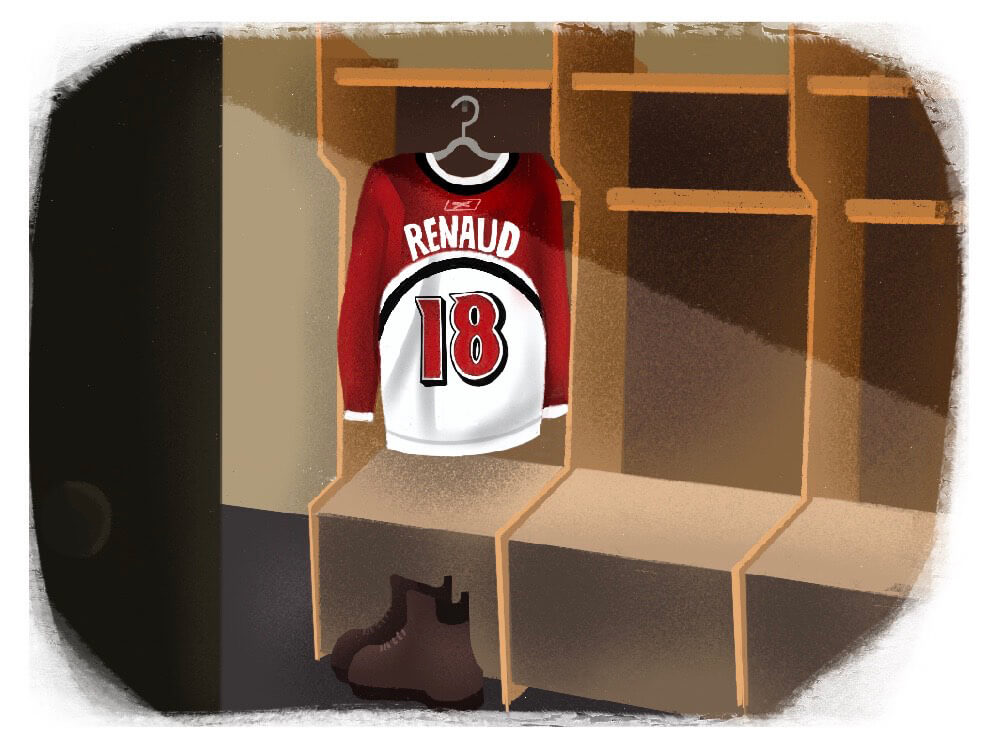
A transition to coaching was underway even before Webster hung up the blades. For that briefest of NHL comebacks the Wings had called him up from Adirondack, where he was head coach and, for a short time, a player-coach. He wound up putting in six seasons behind the bench in the AHL, the Central Hockey League and the International Hockey League, winning a couple of championships along the way. The die seemed cast yet again, this time forecasting a return to the NHL as a coach.
Webster took the head coaching job with the Windsor Compuware Spitfires in 1985 and, while he’d work at a few other stops thereafter, home became Tecumseh, Ont., 15 minutes from the tunnel entrance on Canadian side, a couple of minutes less to the door of the legendary old barn downtown. There, he seemed to have found the level of work he enjoyed most — riding the bus to stops familiar from his own junior days, working with young emerging talents away from the spotlight, avoiding the nastiest aspects of the business. Less peripatetic, less cutthroat than the pro grind; more grounded, more fun with the teenagers.
He didn’t have to win anyone’s respect but he made every effort anyway. “We thought, ‘This is an NHL guy,’” says Winnipeg Jets coach Paul Maurice, who was in his second year on the Windsor blue line when Webster arrived. “He was a hard coach, a complete hard-ass, which back in the ’80s was completely okay, but a caring coach. He created a discipline in the room — there was going to be no bullshit and the eyes were going to be on him.”
Vegas Golden Knights coach Pete DeBoer was in his first season with Windsor and knew nothing about Webster as a player until he stayed after practice for impromptu pickup games. “They were pretty competitive and Tom would shoot the puck, just wire it, past our goalies,” DeBoer says. “You could still get an idea of the great player he had been. So we looked it up — that his nickname was ‘Hawkeye’ and he scored 30 goals for the Red Wings. He never talked about himself or his career. He didn’t tell you but he didn’t have to.”
Maurice suffered an eye injury that would cut short his playing career and was probably heading off to college when Webster offered him a job mid-season as an assistant coach. “It wasn’t until I played for and worked with Tom that I ever thought coaching would be something I’d like to do,” Maurice says. “He made the job seem really respectable and rewarding, but at the same time fun. He made a huge difference in a lot of people’s lives, mine included.”
Likewise, Webster influenced DeBoer’s career and approach. “We were teenagers, young and impressionable, and he wasn’t just a coach on the ice but a role model off the ice,” DeBoer says. “He never sacrificed his family or his family time for the job [but] at the same time, he was all-in for what he was doing with us. He wasn’t afraid to show his personal side, not like some coaches. He and Carol [Webster’s wife] would have players over to dinner to get to know them. He made us feel like family. And he could relate to everyone on the bench — from the really talented kids right on down to the fourth line. He was a great coach and an even better man.”
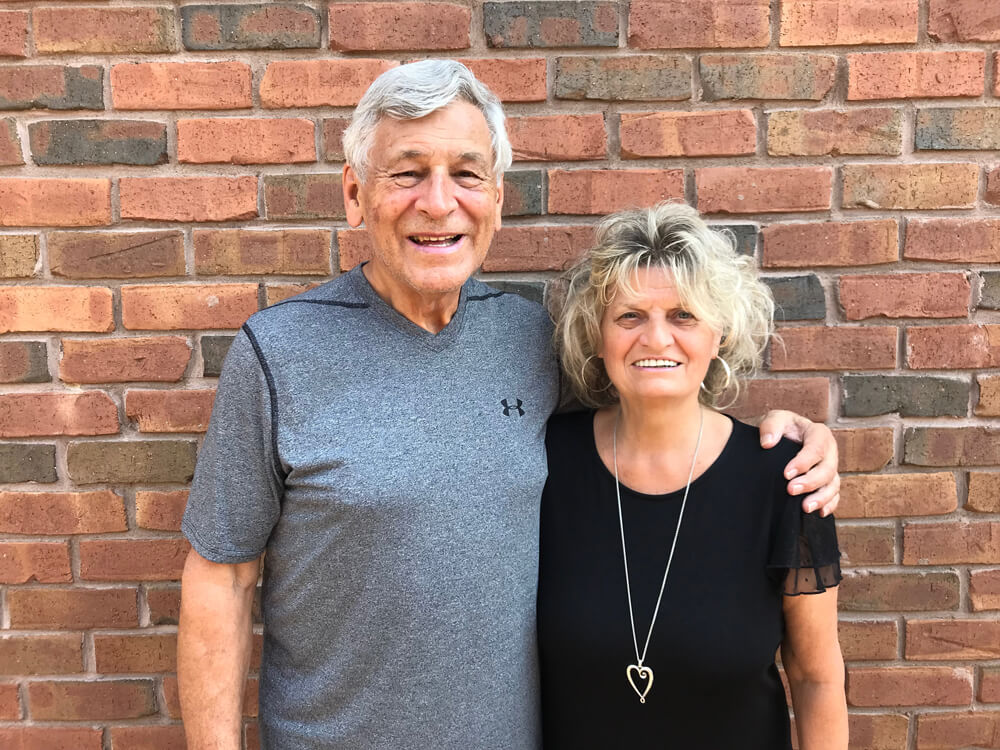
Bringing the players and Spitfires staff to his home wasn’t just an exercise in team-building, it was also a treat for his kids. His daughter would help her mother with the shopping and the work in the kitchen, while Brent, the firstborn son, would pick the players’ brains about the game and hang on their every word. Says Stacy Scarpace, Webster’s daughter: “Mom always made double-stuffed potatoes and after we’d sit around and play euchre with the players. Mo [Paul Maurice] was probably our favorite — he was just so much fun — and Pete DeBoer was great, too.”
A couple of months into his second season with the Spitfires, Webster got an unexpected call from Phil Esposito, then the New York Rangers’ GM. Esposito was about to fire his coach, Ted Sator, and offered the job to Webster. A head-coaching job with an Original Six team: It seemed like Webster had his big break and he left the Windsor Arena for Madison Square Garden.
The big break turned out to be star-crossed.
Webster had been on the job just five games when he came down with an inner-ear condition that made flying impossible. For a stretch, he served as the Rangers’ coach for home games only, while Esposito and assistant coaches Ed Giacomin and Wayne Cashman stepped in on the road. Webster thought he had healed up and was ready to take on full-time duties and the travel involved in January, but his inner-ear issues flared up again on a flight a few weeks later. “Webbie told me it was the worst pain he ever had in his life,” Button says.
The situation was untenable; Webster tendered his resignation. The next fall he was back behind the Windsor bench and the following spring the team rolled through Ontario league playoffs undefeated with a squad led by Adam Graves. “In his time there, Tom took a terrible program and made it a great one,” says Maurice.
In the summer of ’88, the NHL called again. This time it was the Los Angeles Kings and Webster was soon standing behind the likes of Wayne Gretzky, Luc Robitaille and Larry Robinson. Despite surgery, his inner-ear condition still occasionally flared up, but it was nothing quite as disabling as his time flying with the Rangers.
The record books are pretty kind to Webster over his time in L.A. — the Kings made the playoffs in each of his three seasons, made it into the second round twice, and won the only division title in the franchise’s long history. “We had really good teams there and we had Wayne, but we ran into the Oilers the year they went on to win the Cup,” says Dave Taylor, who played for the Kings under Webster. “It seemed like each season we’d run into a hot team and we’d have guys down with injuries.”
Webster’s time in L.A. became mostly remembered for two incidents that might seem out of character to those who knew him only away from the arena. In a game against the Flames, he reached over the boards and slugged Doug Gilmour. In another game, angered by a call, he threw a stick from the bench onto the ice where it hit referee Kerry Fraser in the skate, landing Webster a 12-game suspension and fine. “We loved it,” Taylor says of the players’ reaction. “It wasn’t just him boiling over. He did it because he was passionate and wanted us to know it. He did it to get an effect.”
Stacy, a high-school senior at the time, was at the game with a pair of her girlfriends when her father threw the stick at Fraser. “My girlfriends know my dad as Mr. Webster, a kind, friendly, outgoing dad, and they see him chuck the stick at Fraser,” she says. “After the game, he was driving us home and they didn’t know what to say. He turned and said, ‘You know, we were just exchanging some recipes out there.’ They just thought that was the funniest thing. [The incident on the bench] was terrifying and then an hour later he gets back to being just his easygoing self.”
When GM Rogie Vachon fired Webster, it might have come as a relief on one level. The players knew flying was still a misery for him. And per Taylor and others from those days, Webster loved being so close to the game at the highest level, but never craved nor was even comfortable with the spotlight. Says Paul Maurice: “Tom was a modest guy, maybe even shy if he wasn’t around people he knew well.”
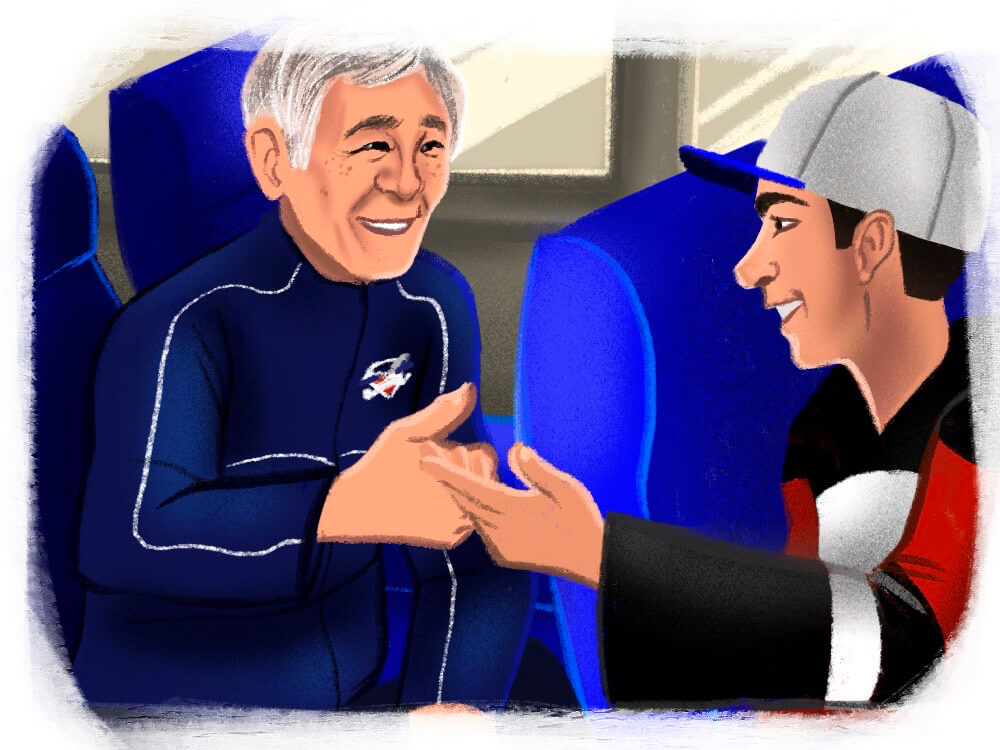
Webster would later put in five seasons as an NHL assistant coach. First, he was in Philadelphia for a couple of years, and then he headed to Hartford for the last go-round of the Whalers and, with the franchise’s relocation, the first two seasons of the Hurricanes in Carolina.
In Hartford and then Carolina, he was an assistant to a former pupil, Maurice, who has no issue owning up to the reason he bought his mentor in. “He had no ego,” Maurice says. “The idea of being an assistant for someone who had played for him and had been his assistant didn’t matter to him. He was like a development guy for me. He was still my mentor. What he did for me, how he constantly helped me, when I was an assistant to him in Windsor was exactly what he did for me when he was [my] assistant in Hartford and Carolina. He taught me the technical stuff from video but also working the people, motivating the players — I realize that now more than I did at the time.”
In Hartford and Carolina, Webster again had health issues and at one point was on the waiting list for a liver transplant. Though ultimately he recovered without transplant surgery, the travel grind wore on him and he headed back to Windsor for a third and final term behind the Spitfires bench. Over the years, the Websters moved 28 times, with Carol usually having to marshal the moving trucks and look after the kids while Tom was playing or coaching. The time had come for him to settle down — they had a nice place in Tecumseh and they’d spend the last two decades of their lives there. “By the time he came back [to the Spitfires in 1999], Tom had changed or evolved … the same guy, the same values, but mellower,” says DeBoer, who by then had moved on to coach the division-rival Plymouth Whalers. “One year we met the Spitfires in the playoffs and the series turned ugly at the end. Tom was really hot and I wondered if it might hurt our relationship. But a few weeks later, Tom and Carol invited my wife and I over to dinner and everything was smoothed out.”
Again, Webster put together winning teams, but by then he’d become a fatherly or even a grandfatherly presence in the room. He had always built a family aspect around the team and it was cemented when he hired his son Brent as an assistant coach. Bringing cookies to the arena and leaving them for the players in the dressing room, Carol became the hockey mom in loco parentis to teenagers who had to move away from home to play. Says Steve Ott, a former longtime NHLer who played three seasons for Webster with the Spitfires: “It really was family. You felt disappointed when you disappointed him. Tom could be tough when it was necessary but it was sternness with respect. He was someone you really looked up to. He didn’t embarrass you [in front of teammates]. He’d sit you down one-on-one, and he talked to you … gave you the life lessons of experiences that he had with certain players or certain situations he’d been through.”
In his last season with the Spitfires, Webster had a blow-up with a player in the dressing room and afterwards, according to a friend, “didn’t like the person that coaching sometimes made him.” He wanted to stay around the game and eventually found a job as the Windsor/Detroit-based scout, pro and amateur, for the Calgary Flames.
As a mid-life career change, it seemed like the perfect fit: a chance to stay in the game, stay connected with friends, and stay closer to home. The switch did present challenges, however, including one so basic that it hadn’t occurred to either Webster or his new employers: typing. “Tom’s hands were so big that he had trouble hitting one key at a time and he never learned how to type, so at the best of times he would hunt and peck and each game report ate up a lot of time,” says his son-in-law, L.J. Scarpace, the Detroit Red Wings video coach. “Eventually he could do his own video, but it took him about four hours to do what I do in half an hour.”
If hockey knowledge was Webster’s strongest attribute, his attitude and people skills ran a close second and third. Almost all scouts walk into their first jobs with a lot less experience than Webster had; few come in with his work ethic. Says Button: “That first year he told me he wanted to learn all about scouting, the work that you put in filing reports, getting on conference calls for staff meetings, the war room. Here was a guy who played on Gordie Howe’s wing and coached Wayne Gretzky but he came in with zero sense of entitlement and a real willingness to go back to school.”
Whether working as a pro scout, his original position in the organization, or in the amateur ranks, where he focused in later years, Webster brought a deceptively simple approach to player evaluations. “He didn’t look at a player’s weaknesses, he focused on what a player could do,” Scarpace says. “Most scouts look for holes in a player’s game and don’t pay close enough attention to how he could help. Tom looked for someone he’d have liked to play with, someone who would be tough to play against.”
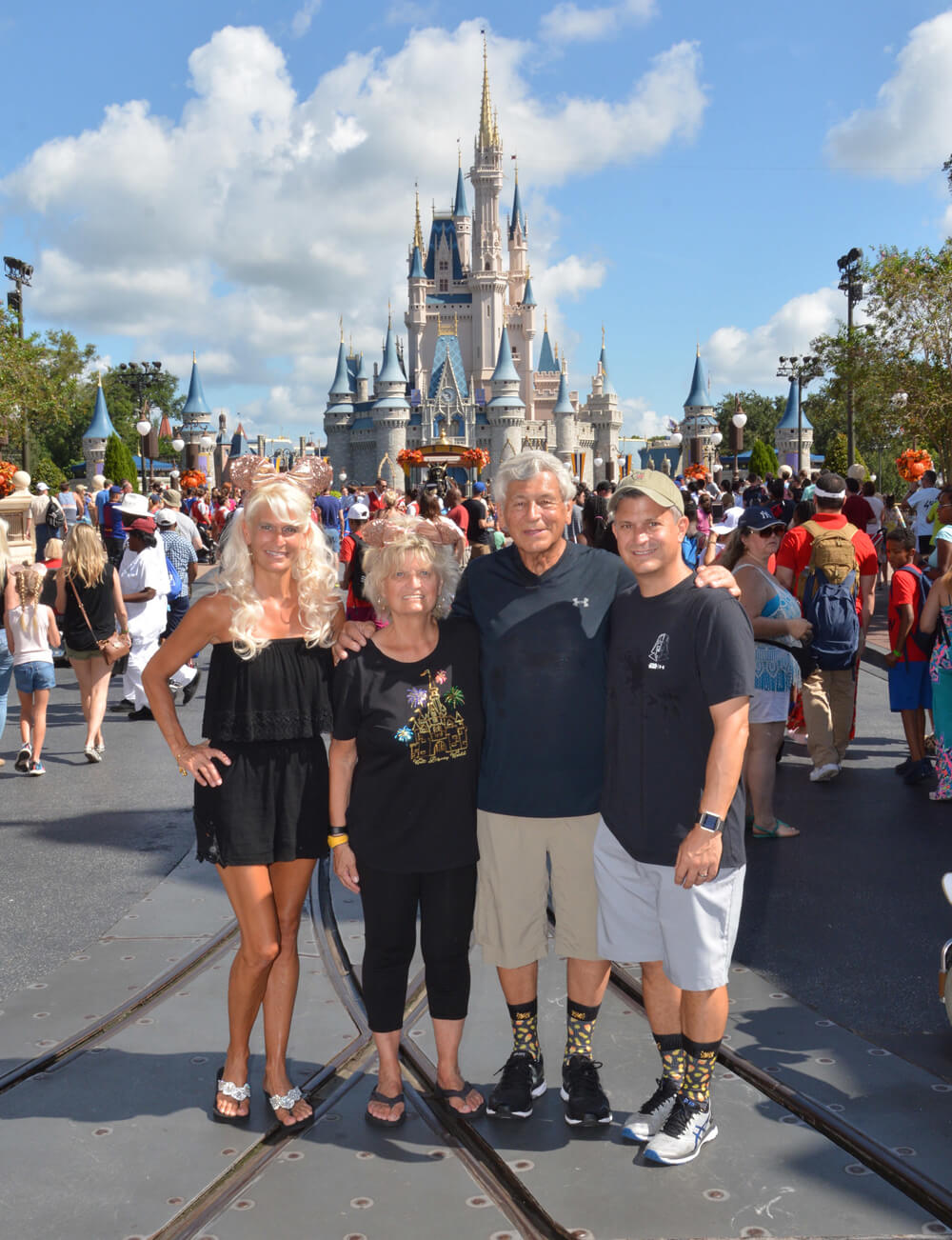
Once he was comfortable in the organization, Webster didn’t just paint by numbers but gave a lot of thought to his craft: Some organizations will issue their staff books to keep records of the games and players they scouted, while some scouts will come up with books of their own design and have them printed themselves. Webster was in the latter category but when others on the Flames staff saw his meticulously kept notes, Calgary wound up adopting his design and it became the house format.
Webster was also unique among scouts — a group that tends to travel like wolves, alone or in packs — in the fact that he frequently travelled with his wife, at least to those drivable destinations in Ontario or the U.S. Midwest. While he was in the arena, she would take the car and go shopping.
Though Webster retired in 2014, his influence is still conspicuous when you look at recent Flames rosters. He pushed hard for the team to draft defenceman T.J. Brodie, who was ranked 164th among North American skaters and could well have been passed over entirely if Webster hadn’t made the case for selecting him in the fourth round. “[Webster] had come out and visited my family on the farm [in Chatham, Ont.] before the draft, so we had a pretty good idea that there was interest and he was pushing for me,” Brodie says. “After the draft, he’d come out to my games [with the Saginaw Spirit] and we’d always talk afterwards about what I could work on.”
Brodie logged seven full seasons on the Flames blue line but his contribution to Calgary’s fortunes were outstripped by another player Webster pushed for: captain Mark Giordano, who won the Norris Trophy in 2019. Giordano came from even farther off the radar — playing for the Owen Sound Attack, he had passed unselected through the draft three times. GM Darryl Sutter was looking to sign a bundle of undrafted free agents to build organizational depth — the bottom half of an AHL lineup or, more likely, players who could fill out an ECHL roster. Then-head amateur scout Mike Sands was the first to table Giordano, something of a late bloomer, as a possible longshot and Webster was dispatched for a second opinion. He came back with an enthusiastic, even emphatic, recommendation for signing Giordano. It wasn’t a case that Webster foresaw a captaincy or Norris Trophy but his approach did apply — most scouts looked for holes in Giordano’s game because he had passed through a draft, while Webster focused on his assets, the willingness to work and learn, and his steady improvement every season.
When Webster told the Flames that he was planning to retire after the 2014 draft, it came out of left field. Button offered to let him stay on in a part-time role. No soap. “Webbie couldn’t do anything part-time,” Button says. “He told me that he owed the time to Carol … she had put in so much time over the years for his career, this was a chance to spend time with her, with their kids and their grandkids.”
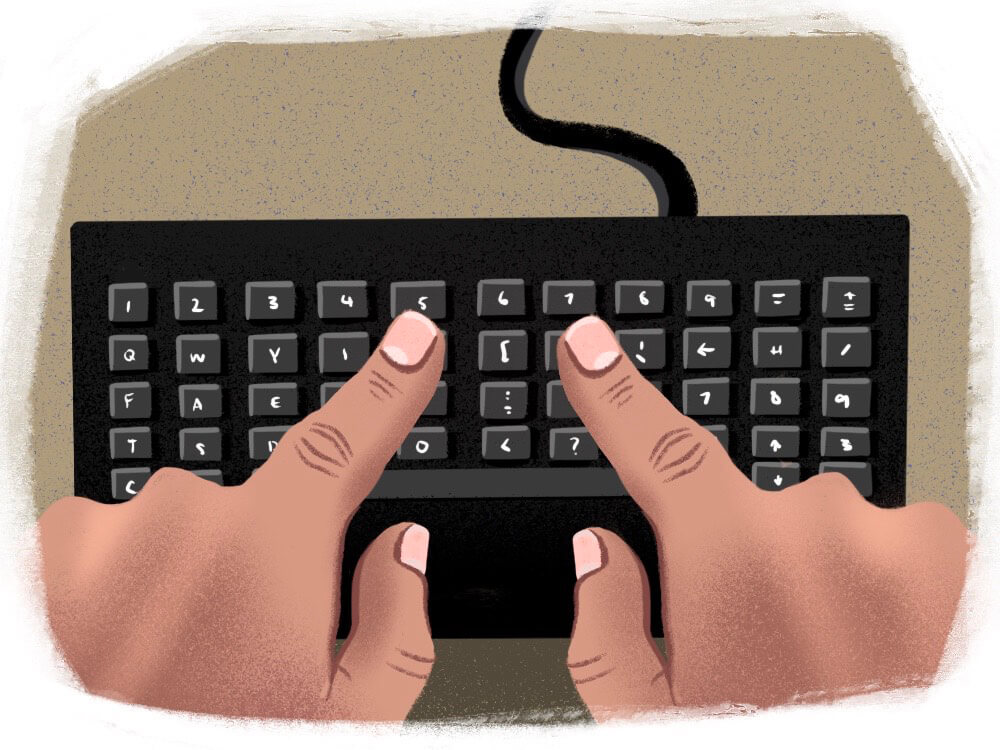
More than the crowd in the arena knew, the moment when he made the Flames’ last pick at his last draft provided a perfect sendoff. He had met Carol in Niagara Falls, when he had spotted her putting pennies in parking meters for customers outside a store she worked at. He told a friend then and there that he had just laid eyes on the girl he’d marry. Her name, at least a homonym, was written into his farewell from the scouting ranks. He leaned over the microphone and said: “The Flames are pleased to select, from the Victoria Royals, Austin Carroll.”
The grind was behind him but Webster still made it out to Spitfires games to bump into old friends. The pace of his life was relaxed, though. “We’d see Tom and Carol riding their bikes around Tecumseh,” Rychel says. “Around town I’d always see them together. They’d bike over and have lunch.”
Tom and Carol bought a house in Orlando — they had taken their granddaughters to Disney World a few times over the years and the plan was to winter there and get in enough golf to keep his scratch handicap. In early 2019, they celebrated their 50th anniversary with their kids and grandkids. Tom’s retirement with Carol was sweet for as long as it lasted, but even at their anniversary, they knew that she had terminal cancer and that it was likely their last together.
“I used to call Tom pretty regularly and he always made it about you,” says Maurice. “After Carol died, I wanted to check in to make sure that he was okay … that he was getting through it. And a few minutes in, he turned it around and was asking if I was okay after her death. He always thought about the other person even when the person who meant the most to him was gone.”
“Carol had passed not long before we [St. Louis] won the Cup, but right afterwards Tom sent me a text congratulating me and saying how proud he was,” says Ott, an assistant coach with the Blues. “My Cup party last summer was the last time I saw him and he seemed like he was in good spirits. He really enjoyed the party, seeing a lot of the teammates from our Spitfires teams.”
Says Boughner: “The last time I saw Tom was last summer at the Spitfires reunion golf tournament. You could tell [Carol’s death] had hit him pretty hard but he seemed to be pulling out of it. Talking to his former players and friends was a way to help him move past the grief, even for a little while.”
Tom Webster didn’t live a full year after his wife’s death. Last fall he was diagnosed with terminal cancer and he moved in with Stacy and L.J. and their daughters in Canton, Mich. When he died in April, quarantine wouldn’t allow for any funeral service. “At that draft, when they gave him the standing ovation, there were dozens of guys whose lives he touched like he touched mine,” Maurice says. “I learned so much of the game from him and learned a lot of other important things — more important things — from his example.”
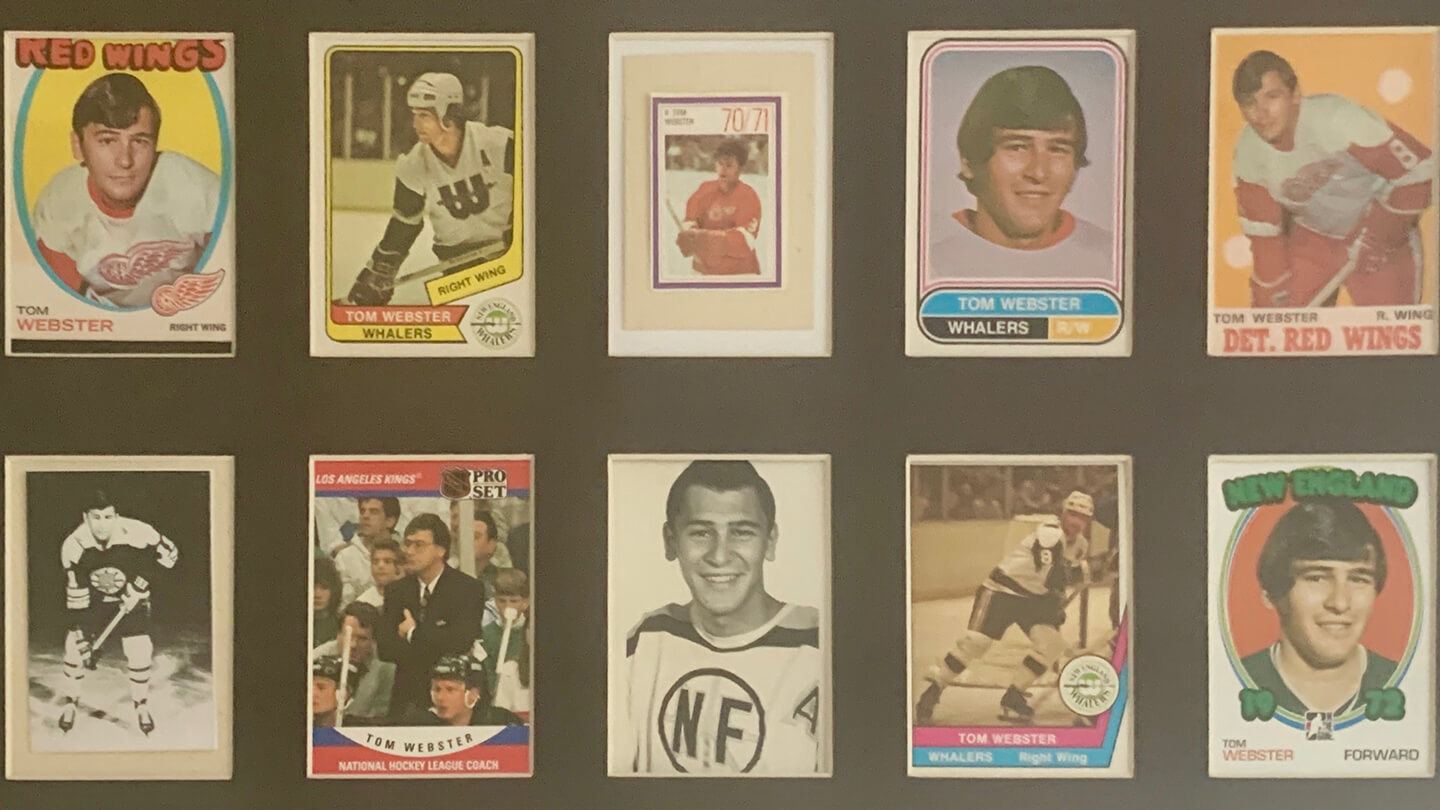
When Tom Webster came out of the Windsor dressing room that morning back in February 2008, I approached him, expressed my condolences, and made some terribly empty small talk about the awful circumstances. He struggled to find the words. “He was a great kid, a special kid, great family,” Webster said. “I really think Mickey would have made … he had a real shot at it. No one would have worked harder. The work boots they put in front of his stall … they always give those to the hardest working player in the game, but they’ll stay at his stall from now on.”
The speculative scouting report was eating Webster up word by word. He cut it off at that vague thumbnail because Mickey Renaud’s game was just one of the smaller pieces of the tragic loss.
“What did you say to the players you were sitting down with?” I asked.
“I told them that it’s okay to feel what they were feeling and that my heart went out to them,” he said. “It’s too fresh. Playing a game doesn’t move you past this. This isn’t about hockey. Not even a little bit. It’s about a friend and probably for most of them, the first time they’ve had a friend die. There’s no getting ready for that. I just let them talk.”
I pulled out a notebook to take down a couple of lines. Seeing it, he said, “If you can, can you leave me out of the story? Don’t mention that I was in there talking to them. This isn’t my time. This is the boys’ time. This is Warren’s and Bob’s time. I’m trying to help out but this isn’t my time.”
I respected that. His name didn’t appear in the story.
Those who knew him best didn’t object when I told them I planned to write about Tom Webster walking out of the Spitfires’ room, his eyes reddening, doing his best to maintain his composure. Yeah, he would have been embarrassed by the attention, but he probably would have also understood the importance of giving those closest to him a chance to tell those he never met how much he’s missed. This is his time.

